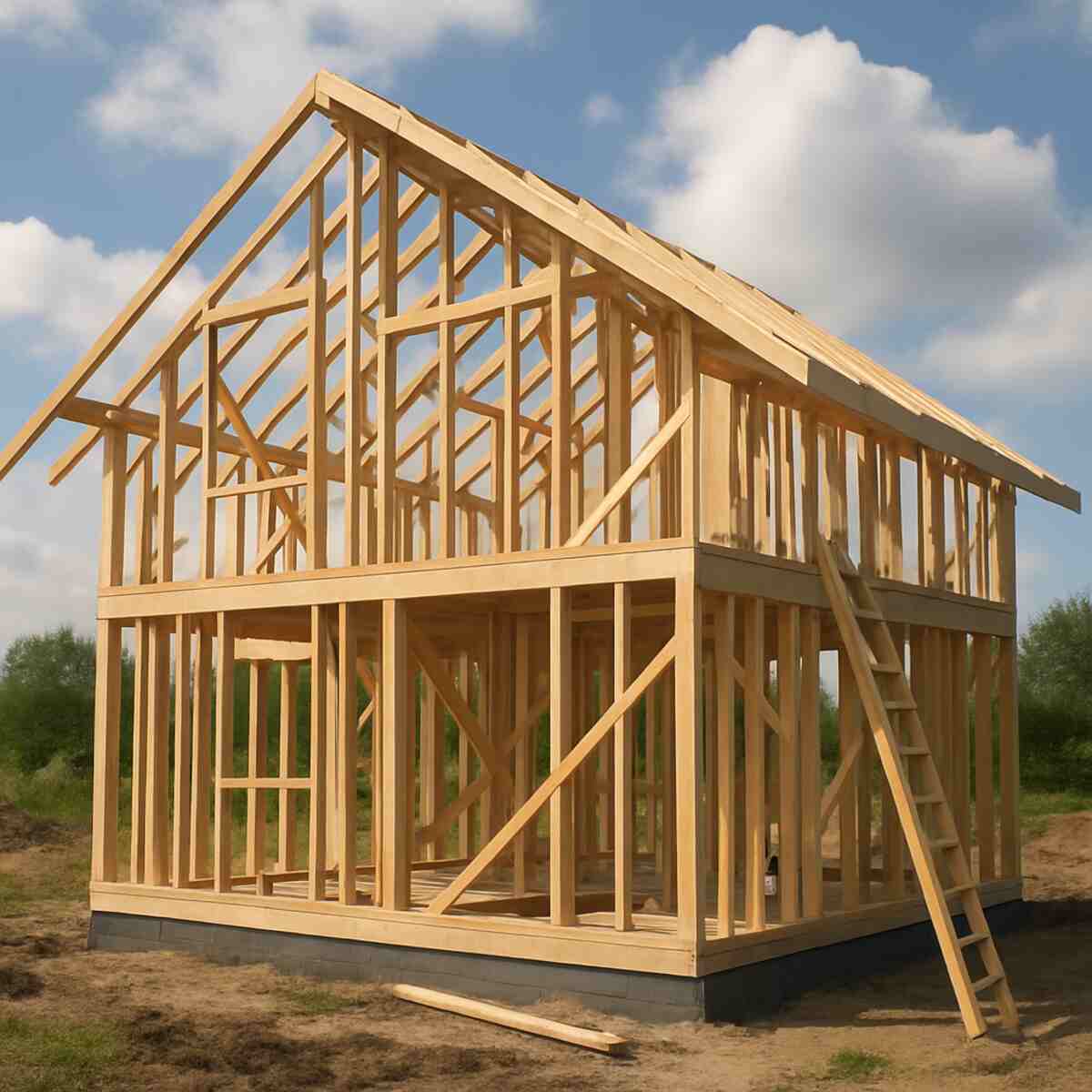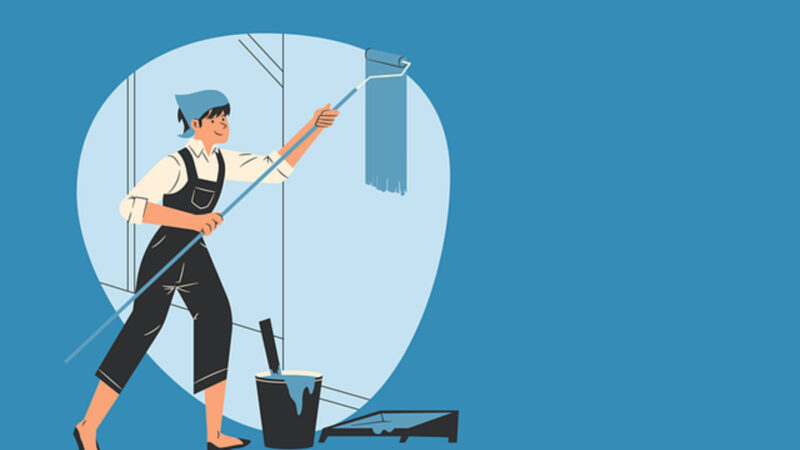Timber Framing Techniques for Modern Homes

Hey there! If you’ve ever dreamed of building a home that combines traditional charm with modern functionality, timber framing might just be the perfect fit for you. Timber framing is a classic building method that dates back centuries, yet it’s making a huge comeback in today’s architecture scene. This timeless technique combines the rustic allure of exposed wood with the versatility of modern design, offering a unique blend of past and present. Let’s dive into the world of timber framing and discover how you can use these techniques to create stunning modern homes. Whether you’re looking for durability, sustainability, or simply a beautiful aesthetic, timber framing might be your answer. Find the best timber framing.
Before we get into the nitty-gritty, let’s clarify what timber framing is all about. In simple terms, timber framing is a construction method that uses large wooden beams and posts to create a frame for a building. Unlike conventional stick-built homes, which rely heavily on nails and smaller pieces of wood, timber-framed structures are held together using wooden joinery techniques. This not only provides incredible strength and durability but also adds a unique aesthetic appeal.
When we talk about timbers for timber framing, we’re referring to the large, often exposed wooden beams that give a timber-framed home its distinctive look. These timbers can be sourced from a variety of woods, each offering its own unique characteristics. Common choices include oak, pine, and cedar, but really, the sky’s the limit!
Oak, known for its strength and hardness, is a popular choice for those seeking durability. It ages beautifully, developing a rich patina over time. Pine, on the other hand, is lighter and offers a more subtle grain, making it ideal for those looking for a softer appearance. Cedar provides natural resistance to insects and decay, making it perfect for longevity and low maintenance.
The choice of timber also influences the overall aesthetic of the home. Darker woods like walnut can create a dramatic and sophisticated look, while lighter woods like ash offer a more modern and airy feel. Mixing different types of wood can create a dynamic visual contrast, adding depth and interest to your design.
Using locally sourced timber not only supports local economies but also reduces the environmental impact of transportation. Timber is a renewable resource, and when harvested responsibly, it contributes to sustainable building practices. Choosing certified sustainable wood can further enhance the eco-friendly aspects of your construction project.
Timber frame construction is all about precision and craftsmanship. The process involves carefully cutting and fitting each timber to form a strong, interlocking framework. The joints are typically secured with wooden pegs or dowels, eliminating the need for metal fasteners.
Every cut in timber framing must be precise to ensure the structure’s stability. Craftsmen use traditional tools and techniques, such as chisels and mallets, to shape each piece of timber. This hands-on approach not only ensures precision but also preserves the art of traditional woodworking.
The interlocking framework is a hallmark of timber framing, where each piece supports the other, creating a cohesive and strong structure. This method of construction allows for large open spaces without the need for interior load-bearing walls, making it ideal for open-concept designs.
The use of wooden joinery techniques, such as mortise and tenon joints, is central to timber framing. These joints provide robust connections without the need for metal fasteners, which can corrode over time. Wooden pegs or dowels secure the joints, allowing for slight movement and flexibility, which is beneficial in areas prone to seismic activity.
You might be wondering why timber framing is gaining popularity in modern home construction. Here are a few reasons:
One of the most appealing aspects of timber framing is its natural beauty. The exposed beams and intricate joinery create an inviting atmosphere that blends seamlessly with both traditional and contemporary design styles.
Timber framing exudes a warmth that is both inviting and comforting. The natural grain and texture of wood bring a sense of tranquility and connection to nature, enhancing the overall ambiance of the home.
Timber framing’s versatility allows it to be incorporated into various architectural styles, from rustic cottages to sleek, modern homes. The adaptability of timber framing means it can be tailored to suit personal tastes and design preferences.
The timeless appeal of timber framing lies in its ability to age gracefully. As the wood matures, it develops a rich patina, adding character and depth to the structure. This aging process ensures that timber-framed homes remain beautiful for generations.
Timber-framed homes can be incredibly energy-efficient. The thick wooden beams provide excellent insulation, helping to keep your home warm in the winter and cool in the summer. Plus, timber is a renewable resource, making it an eco-friendly choice.
Wood is a natural insulator, providing effective thermal resistance. The large beams used in timber framing reduce thermal bridging, helping to maintain consistent indoor temperatures and reducing the need for additional insulation.
Timber is a renewable resource, and when sourced responsibly, it contributes to sustainable building practices. Using wood from sustainably managed forests ensures a continuous supply and promotes ecological balance.
The production and processing of timber require less energy compared to other building materials, such as steel or concrete. This results in a lower carbon footprint, making timber framing an environmentally conscious choice.
Timber framing is known for its strength and longevity. Properly constructed timber frames can last for generations, withstanding the test of time and the elements.
Timber-framed structures are designed to withstand natural forces, such as wind and earthquakes, due to their flexible joinery. The inherent strength of wood allows these structures to absorb and dissipate energy, reducing the risk of damage.
The quality of the wood used in timber framing contributes to its longevity. Properly treated and maintained, timber can resist decay and insect damage, ensuring the structure remains robust for years.
The durability of timber framing means it can be passed down through generations, creating a legacy for families. The ability to withstand time and weather makes timber-framed homes not only a place to live but also a heritage to cherish.
Now, let’s get into the techniques that make timber framing so special. Here’s a step-by-step guide to some of the essential methods used in timber frame construction:
The first step in timber framing is scribing. This involves marking the timbers to indicate where cuts and joints will be made. Precision is key here, as even the slightest miscalculation can affect the entire structure. Once the scribing is complete, it’s time to start cutting. This is where skilled craftsmanship comes into play, as each piece is carefully shaped to fit perfectly with the others.
In timber framing, precision is paramount. Craftsmen meticulously measure and mark each piece of timber to ensure a perfect fit. This attention to detail ensures the structural integrity of the frame and prevents costly mistakes during assembly.
Traditional tools such as chisels, saws, and mallets are essential in timber framing. These tools allow craftsmen to make precise cuts and create intricate joints that are both functional and beautiful.
Shaping timber is an art form in itself. Craftsmen use their skills to transform raw wood into perfectly fitting components, ensuring that each piece contributes to the overall strength and beauty of the structure.
Mortise and tenon joints are the backbone of timber framing. These joints involve creating a hole (the mortise) in one timber and a corresponding projection (the tenon) on another. When fitted together, they create a strong, interlocking connection. This technique has been used for centuries and is a testament to the durability of timber-framed structures.
The mortise is carefully chiseled out of the timber, ensuring that it is the correct size and shape to accommodate the tenon. This precision work requires skill and patience, as the fit must be perfect for the joint to be effective.
The tenon is shaped to fit snugly into the mortise. It is essential that the tenon is cut accurately, as any discrepancies can compromise the strength of the joint. The tenon is often tapered to allow for easy insertion and a tight fit.
Once the mortise and tenon are fitted together, wooden pegs or dowels are used to secure the joint. This method eliminates the need for metal fasteners, ensuring the joint remains strong and flexible.
Once all the individual pieces are ready, it’s time to raise the frame. This is where the magic happens! The timbers are assembled on-site, and with a bit of teamwork, the frame is lifted into place. It’s an exciting moment that brings the structure to life.
The assembly of the frame on-site requires coordination and teamwork. Each piece is carefully positioned, and the structure begins to take shape as the timbers are joined together.
Raising the frame is a collaborative effort that involves multiple people. Each team member plays a crucial role, from guiding the timbers into place to securing the joints. This teamwork ensures the frame is erected safely and efficiently.
The moment the frame is raised is a significant milestone in the construction process. It marks the transition from planning and preparation to the realization of the structure, creating a sense of accomplishment and excitement.
Timber framing isn’t just for rustic cabins in the woods. It’s making waves in modern architecture too! Here’s how you can incorporate timber framing techniques into your contemporary home design:
Timber framing is perfect for creating open, airy spaces. The large beams allow for expansive rooms without the need for load-bearing walls, giving you the freedom to design open-concept living areas that are both functional and stylish.
The strength of timber framing allows for large, open spaces without the need for interior support walls. This design flexibility enables the creation of expansive living areas that are ideal for modern lifestyles.
Open-concept designs facilitate seamless transitions between different areas of the home, such as the kitchen, dining, and living spaces. This fluidity enhances the flow and functionality of the home, making it perfect for entertaining and family living.
The open spaces created by timber framing maximize the use of natural light. Large windows and strategically placed openings allow sunlight to flood the interior, creating a bright and inviting atmosphere.
With the growing focus on sustainability, timber framing is an excellent choice for eco-conscious homeowners. By using locally sourced timbers and minimizing waste, you can reduce your carbon footprint while enjoying a stunning, energy-efficient home.
Using locally sourced timbers not only supports local economies but also reduces transportation emissions. This practice is a key component of sustainable building, promoting environmental responsibility.
Timber framing techniques prioritize precision and efficiency, minimizing waste during the construction process. Any offcuts or surplus wood can be repurposed or recycled, further reducing the environmental impact.
Timber-framed homes are naturally energy-efficient due to the insulating properties of wood. Coupled with modern insulation techniques and energy-efficient systems, these homes can significantly reduce energy consumption and costs.
Timber framing allows you to blend traditional craftsmanship with modern design elements. Whether you’re incorporating sleek glass walls or minimalist interiors, the warm, natural texture of timber adds a touch of character and warmth to any space.
The combination of timber with modern materials such as glass and steel creates a stunning visual contrast. This fusion of old and new elements results in a contemporary design that respects traditional craftsmanship.
Timber framing complements minimalist aesthetics by providing a natural and understated backdrop. The clean lines and exposed beams enhance the simplicity and elegance of modern design.
The versatility of timber framing allows for the creation of unique and personalized spaces. Whether it’s a cozy reading nook or a grand, open-plan living area, timber framing can be adapted to suit any vision.
Ready to embark on your timber framing journey? Here are a few tips to get you started:
Partnering with an experienced timber frame builder is crucial. Look for professionals who have a deep understanding of timber framing techniques and a portfolio of successful projects.
When choosing a builder, evaluate their experience with timber framing projects. A builder with a proven track record will ensure that your project is executed with skill and precision.
Review the portfolios of potential builders to assess the quality and style of their work. This will give you insight into their craftsmanship and ability to deliver the aesthetic you desire.
Ask for references from previous clients to gauge the builder’s reliability and professionalism. Speaking with past clients can provide valuable insights into the builder’s work ethic and attention to detail.
Work closely with your builder and architect to design a home that suits your style and needs. Consider factors like layout, materials, and energy efficiency to create a space that’s perfect for you.
Collaborate with architects who have experience in timber frame design. Their expertise will help you create a functional and aesthetically pleasing home that meets your needs and preferences.
Tailor your design to reflect your personal style and lifestyle. Whether you prefer a rustic retreat or a modern sanctuary, timber framing can be adapted to create a space that is uniquely yours.
Incorporate energy-efficient features and sustainable practices into your design. This will enhance the comfort of your home and reduce its environmental impact, aligning with modern sustainable living principles.
Timber framing is a labor of love, and the process can take time. Embrace each step, from selecting the timbers to raising the frame, and enjoy the journey of bringing your dream home to life.
Take the time to appreciate the craftsmanship involved in timber framing. Each step of the process is an opportunity to witness the skill and dedication of the artisans who bring your vision to life.
Stay engaged throughout the construction process, from initial planning to completion. Your involvement ensures that the project aligns with your expectations and allows you to make informed decisions along the way.
Celebrate each milestone in the construction journey, from the selection of timbers to the raising of the frame. These moments are integral to the creation of your dream home and deserve to be cherished.
Timber framing is a timeless building technique that offers a perfect blend of beauty, strength, and sustainability. Whether you’re dreaming of a cozy cabin or a sleek modern home, timber framing can bring your vision to life. With its natural warmth, architectural versatility, and eco-friendly benefits, it’s no wonder timber framing is gaining popularity in modern home design. So, go ahead and explore the world of timber framing—your dream home awaits!
Feel free to reach out with any questions or to share your timber framing experiences. Happy building!




